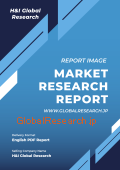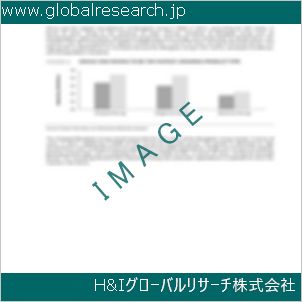1. Preface
1.1. Market Definition and Scope
1.2. Market Segmentation
1.3. Key Research Objectives
1.4. Research Highlights
2. Assumptions and Research Methodology
3. Executive Summary: Global Protein Therapeutics Market
4. Market Overview
4.1. Introduction
4.1.1. Product Definition
4.1.2. Industry Evolution / Developments
4.2. Overview
4.3. Market Dynamics
4.3.1. Drivers
4.3.2. Restraints
4.3.3. Opportunities
4.4. Global Protein Therapeutics Market Analysis and Forecast, 2017–2031
4.4.1. Market Revenue Projections (US$ Mn)
4.4.2. Market Volume/Unit Shipments Projections
4.5. Porter’s Five Force Analysis
5. Key Insights
5.1. Therapeutic monoclonal antibodies approved or in review in the EU or US.
5.2. Regulatory Scenario
5.3. Key Products or Brand Analysis
5.4. Technological Advances in Protein Therapeutics.
5.5. Engineering protein-based therapeutics through structural and chemical design
6. Global Protein Therapeutics Market Analysis and Forecast, By Product
6.1. Introduction & Definition
6.2. Key Findings / Developments
6.3. Market Value Forecast, by Product, 2017–2031
6.3.1. Monoclonal Antibodies
6.3.2. Enzyme Replacement Therapy
6.3.3. Cytokines
6.3.3.1. Interferons
6.3.3.2. Interleukins
6.3.3.3. Growth Factors
6.3.4. Fusion Proteins
6.3.5. Anti-coagulants
6.3.6. Bone Morphogenetic Proteins (BMPs)
6.3.7. Hormones
6.3.8. Others (engineered protein scaffolds, etc.)
6.4. Market Attractiveness Analysis, By Product
7. Global Protein Therapeutics Market Analysis and Forecast, By Application
7.1. Introduction & Definition
7.2. Key Findings / Developments
7.3. Market Value Forecast, by Application, 2017–2031
7.3.1. Metabolic Disorders
7.3.2. Immunologic Disorders
7.3.3. Hematological Disorders
7.3.4. Cancer
7.3.5. Genetic Disorders
7.4. Market Attractiveness Analysis, By Application
8. Global Protein Therapeutics Market Analysis and Forecast, By Route of Administration
8.1. Introduction & Definition
8.2. Key Findings / Developments
8.3. Market Value Forecast, by Route of Administration, 2017–2031
8.3.1. Injectable Proteins
8.3.2. Oral Proteins
8.4. Market Attractiveness Analysis, By Route of Administration
9. Global Protein Therapeutics Market Analysis and Forecast, By Region
9.1. Key Findings
9.2. Market Value Forecast, by Region
9.2.1. North America
9.2.2. Europe
9.2.3. Asia Pacific
9.2.4. Latin America
9.2.5. Middle East & Africa
9.3. Market Attractiveness Analysis, By Region
10. North America Protein Therapeutics Market Analysis and Forecast
10.1. Introduction
10.1.1. Key Findings
10.2. Market Value Forecast, by Product, 2017–2031
10.2.1. Monoclonal Antibodies
10.2.2. Enzyme Replacement Therapy
10.2.3. Cytokines
10.2.3.1. Interferons
10.2.3.2. Interleukins
10.2.3.3. Growth Factors
10.2.4. Fusion Proteins
10.2.5. Anti-coagulants
10.2.6. Bone Morphogenetic Proteins (BMPs)
10.2.7. Hormones
10.2.8. Others (engineered protein scaffolds, etc.)
10.3. Market Value Forecast, by Application, 2017–2031
10.3.1. Metabolic Disorders
10.3.2. Immunologic Disorders
10.3.3. Hematological Disorders
10.3.4. Cancer
10.3.5. Genetic Disorders
10.4. Market Value Forecast, by Route of Administration, 2017–2031
10.4.1. Injectable Proteins
10.4.2. Oral Proteins
10.5. Market Value Forecast, by Country, 2017–2031
10.5.1. U.S.
10.5.2. Canada
10.6. Market Attractiveness Analysis
10.6.1. By Product
10.6.2. By Application
10.6.3. By Route of Administration
10.6.4. By Country
11. Europe Protein Therapeutics Market Analysis and Forecast
11.1. Introduction
11.1.1. Key Findings
11.2. Market Value Forecast, by Product, 2017–2031
11.2.1. Monoclonal Antibodies
11.2.2. Enzyme Replacement Therapy
11.2.3. Cytokines
11.2.3.1. Interferons
11.2.3.2. Interleukins
11.2.3.3. Growth Factors
11.2.4. Fusion Proteins
11.2.5. Anti-coagulants
11.2.6. Bone Morphogenetic Proteins (BMPs)
11.2.7. Hormones
11.2.8. Others (engineered protein scaffolds, etc.)
11.3. Market Value Forecast, by Application, 2017–2031
11.3.1. Metabolic Disorders
11.3.2. Immunologic Disorders
11.3.3. Hematological Disorders
11.3.4. Cancer
11.3.5. Genetic Disorders
11.4. Market Value Forecast, by Route of Administration, 2017–2031
11.4.1. Injectable Proteins
11.4.2. Oral Proteins
11.5. Market Value Forecast, by Country/Sub-region, 2017–2031
11.5.1. Germany
11.5.2. U.K.
11.5.3. France
11.5.4. Italy
11.5.5. Spain
11.5.6. Rest of Europe
11.6. Market Attractiveness Analysis
11.6.1. By Product
11.6.2. By Application
11.6.3. By Route of Administration
11.6.4. By Country/Sub-region
12. Asia Pacific Protein Therapeutics Market Analysis and Forecast
12.1. Introduction
12.1.1. Key Findings
12.2. Market Value Forecast, by Product, 2017–2031
12.2.1. Monoclonal Antibodies
12.2.2. Enzyme Replacement Therapy
12.2.3. Cytokines
12.2.3.1. Interferons
12.2.3.2. Interleukins
12.2.3.3. Growth Factors
12.2.4. Fusion Proteins
12.2.5. Anti-coagulants
12.2.6. Bone Morphogenetic Proteins (BMPs)
12.2.7. Hormones
12.2.8. Others (engineered protein scaffolds, etc.)
12.3. Market Value Forecast, by Application, 2017–2031
12.3.1. Metabolic Disorders
12.3.2. Immunologic Disorders
12.3.3. Hematological Disorders
12.3.4. Cancer
12.3.5. Genetic Disorders
12.4. Market Value Forecast, by Route of Administration, 2017–2031
12.4.1. Injectable Proteins
12.4.2. Oral Proteins
12.5. Market Value Forecast, by Country/Sub-region, 2017–2031
12.5.1. China
12.5.2. India
12.5.3. Japan
12.5.4. Australia & New Zealand
12.5.5. Rest of Asia Pacific
12.6. Market Attractiveness Analysis
12.6.1. By Product
12.6.2. By Application
12.6.3. By Route of Administration
12.6.4. By Country/Sub-region
13. Latin America Protein Therapeutics Market Analysis and Forecast
13.1. Introduction
13.1.1. Key Findings
13.2. Market Value Forecast, by Product, 2017–2031
13.2.1. Monoclonal Antibodies
13.2.2. Enzyme Replacement Therapy
13.2.3. Cytokines
13.2.3.1. Interferons
13.2.3.2. Interleukins
13.2.3.3. Growth Factors
13.2.4. Fusion Proteins
13.2.5. Anti-coagulants
13.2.6. Bone Morphogenetic Proteins (BMPs)
13.2.7. Hormones
13.2.8. Others (engineered protein scaffolds, etc.)
13.3. Market Value Forecast, by Application, 2017–2031
13.3.1. Metabolic Disorders
13.3.2. Immunologic Disorders
13.3.3. Hematological Disorders
13.3.4. Cancer
13.3.5. Genetic Disorders
13.4. Market Value Forecast, by Route of Administration, 2017–2031
13.4.1. Injectable Proteins
13.4.2. Oral Proteins
13.5. Market Value Forecast, by Country/Sub-region, 2017–2031
13.5.1. Brazil
13.5.2. Mexico
13.5.3. Rest of Latin America
13.6. Market Attractiveness Analysis
13.6.1. By Product
13.6.2. By Application
13.6.3. By Route of Administration
13.6.4. By Country/Sub-region
14. Middle East & Africa Protein Therapeutics Market Analysis and Forecast
14.1. Introduction
14.1.1. Key Findings
14.2. Market Value Forecast, by Product, 2017–2031
14.2.1. Monoclonal Antibodies
14.2.2. Enzyme Replacement Therapy
14.2.3. Cytokines
14.2.3.1. Interferons
14.2.3.2. Interleukins
14.2.3.3. Growth Factors
14.2.4. Fusion Proteins
14.2.5. Anti-coagulants
14.2.6. Bone Morphogenetic Proteins (BMPs)
14.2.7. Hormones
14.2.8. Others (engineered protein scaffolds, etc.)
14.3. Market Value Forecast, by Application, 2017–2031
14.3.1. Metabolic Disorders
14.3.2. Immunologic Disorders
14.3.3. Hematological Disorders
14.3.4. Cancer
14.3.5. Genetic Disorders
14.4. Market Value Forecast, by Route of Administration, 2017–2031
14.4.1. Injectable Proteins
14.4.2. Oral Proteins
14.5. Market Value Forecast, by Country/Sub-region, 2017–2031
14.5.1. GCC Countries
14.5.2. South Africa
14.5.3. Rest of Middle East & Africa
14.6. Market Attractiveness Analysis
14.6.1. By Product
14.6.2. By Application
14.6.3. By Route of Administration
14.6.4. By Country/Sub-region
15. Competition Landscape
15.1. Market Player – Competition Matrix (By Tier and Size of companies)
15.2. Market Share Analysis By Company (2022)
15.3. Company Profiles
15.3.1. Thermo Fisher Scientific, Inc.
15.3.1.1. Company Overview (HQ, Business Segments, Employee Strength)
15.3.1.2. Material Portfolio
15.3.1.3. Financial Overview
15.3.1.4. SWOT Analysis
15.3.1.5. Strategic Overview
15.3.2. Genzyme Corporation (Sanofi)
15.3.2.1. Company Overview (HQ, Business Segments, Employee Strength)
15.3.2.2. Material Portfolio
15.3.2.3. Financial Overview
15.3.2.4. SWOT Analysis
15.3.2.5. Strategic Overview
15.3.3. AbbVie, Inc.
15.3.3.1. Company Overview (HQ, Business Segments, Employee Strength)
15.3.3.2. Material Portfolio
15.3.3.3. Financial Overview
15.3.3.4. SWOT Analysis
15.3.3.5. Strategic Overview
15.3.4. Sanofi
15.3.4.1. Company Overview (HQ, Business Segments, Employee Strength)
15.3.4.2. Material Portfolio
15.3.4.3. Financial Overview
15.3.4.4. SWOT Analysis
15.3.4.5. Strategic Overview
15.3.5. Leadiant Biosciences
15.3.5.1. Company Overview (HQ, Business Segments, Employee Strength)
15.3.5.2. Material Portfolio
15.3.5.3. Financial Overview
15.3.5.4. SWOT Analysis
15.3.5.5. Strategic Overview
15.3.6. Takeda Pharmaceutical Company Limited
15.3.6.1. Company Overview (HQ, Business Segments, Employee Strength)
15.3.6.2. Material Portfolio
15.3.6.3. Financial Overview
15.3.6.4. SWOT Analysis
15.3.6.5. Strategic Overview
15.3.7. Amicus Therapeutics
15.3.7.1. Company Overview (HQ, Business Segments, Employee Strength)
15.3.7.2. Material Portfolio
15.3.7.3. Financial Overview
15.3.7.4. SWOT Analysis
15.3.7.5. Strategic Overview
15.3.8. Bayer AG
15.3.8.1. Company Overview (HQ, Business Segments, Employee Strength)
15.3.8.2. Material Portfolio
15.3.8.3. Financial Overview
15.3.8.4. SWOT Analysis
15.3.8.5. Strategic Overview
15.3.9. Bristol-Myers Squibb
15.3.9.1. Company Overview (HQ, Business Segments, Employee Strength)
15.3.9.2. Material Portfolio
15.3.9.3. Financial Overview
15.3.9.4. SWOT Analysis
15.3.9.5. Strategic Overview
15.3.10. DAIICHI SANKYO COMPANY
15.3.10.1. Company Overview (HQ, Business Segments, Employee Strength)
15.3.10.2. Material Portfolio
15.3.10.3. Financial Overview
15.3.10.4. SWOT Analysis
15.3.10.5. Strategic Overview
15.3.11. Abbott
15.3.11.1. Company Overview (HQ, Business Segments, Employee Strength)
15.3.11.2. Material Portfolio
15.3.11.3. Financial Overview
15.3.11.4. SWOT Analysis
15.3.11.5. Strategic Overview
15.3.12. Sanofi
15.3.12.1. Company Overview (HQ, Business Segments, Employee Strength)
15.3.12.2. Material Portfolio
15.3.12.3. Financial Overview
15.3.12.4. SWOT Analysis
15.3.12.5. Strategic Overview
❖ 免責事項 ❖
http://www.globalresearch.jp/disclaimer

-gr.jpg)










